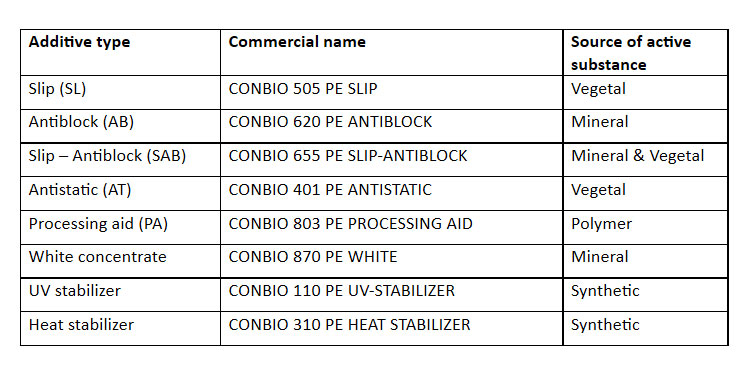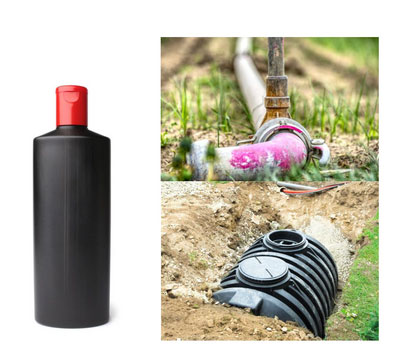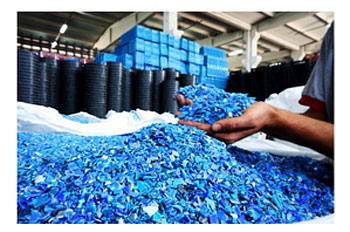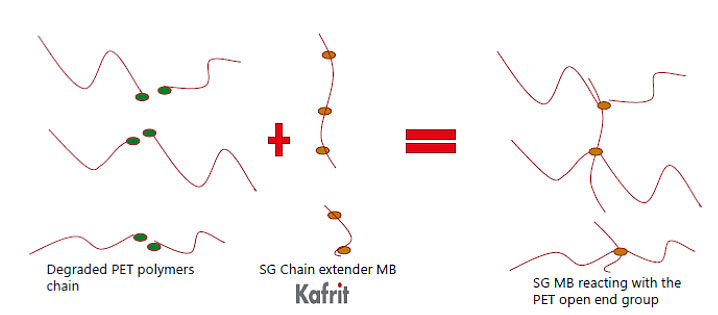The recycling process involves hazards to the recycled material: unwanted oxidation processes, shortening of chains, moisture absorption, reactions that release gases and odors, flow disturbances, color alterations, and more. As a result, the value of recycled materials declines and their uses become limited. In order to minimize these phenomena, Kafrit presents a broad product portfolio aimed at obtaining the highest quality product possible after recycling, as well as other new products with higher sustainability value and lower carbon footprint.
Source: PlasticTime
In line with the growing global sustainability trend, Kafrit group presents the development of two main product groups: concentrates that support increased sustainability and concentrates that support quality recycling of raw materials as part of the transition to circular economy.
The achievement of sustainability
Among the products that support the sustainability trend, the company introduces two key raw material families: ECOMP, which contains compounds and concentrates of biodegradable raw materials that allows to obtain a whole, biodegradable, high oxygen barrier film, and CONBIO, a family based on renewable source carriers.
ECOMP – Biodegradable polymers
This family contains biodegradable polymer blends that meet stringent compostability standards: EN 13432, ASTM D6400-04, ISO 17088. The polymers are used to produce various films, including multilayer films with barriers in multilayered extrusion, among which can be found flexible and soft blends to make bags and films (ECOMP 142), polymers suitable for combination in multilayer barrier films (ECOMP 120), polymers used as adhesive layers between barrier and outer layers (ECOMP 131), as well as a barrier layer that protects from oxygen penetration (ECOMP 00133). This polymer family also has complementary additives based on biodegradable carriers, antiblock (AB 0P59A ECOMP) and antifog (AF 00172 BDP) that have only recently joined the family.
CONBIO – Renewable polymer additives
This family consists of concentrates that all they share in common is that the polymer matrix is based on a renewable source rather than a fossil source. The use of such polymers reduces the overall carbon footprint of the final product. The active ingredients in each concentrate come from different sources: from plants, minerals or synthetic sources. The family contains a wide range of solutions: antiblock additives, slip additives, processing aids (PA), antistatic additives, white concentrates, UV supplements, and heat stabilizers (Table 1).

Table 1: Kafrit’s CONBIO additive package for renewable polymers.
Help with recycling
The recycling process involves hazards to the recycled material: unwanted oxidation processes, shortening of chains, moisture absorption, reactions that release gases and odors, flow disturbances, color alterations, and more. As a result, the value of recycled materials declines and their uses become limited. In order to minimize these phenomena, Kafrit presents a broad product portfolio aimed at obtaining the highest quality product possible after recycling, as well as other new products with higher sustainability value and lower carbon footprint. The product portfolio consists of five main groups: antioxidants, odorants, moisture absorbers, processing aids, and chain extenders.
The antioxidant family
This family of additives stabilizes the material against oxidation that can occur during recycling and damage the material as well as against oxidation processes that occur in the final product and shorten its life. The family contains a number of concentrates that also withstand extremely high temperatures and prolonged stops, and are suitable for working with various polymers including polyethylene, nylon and polypropylene (Table 2).

Table 7: Kafrit antioxidants

Figure 1: Examples of applications with recycled material in applications where long-term oxidation protection is important. Using Kafrit’s AO additive: ST 06341 L.
The odorant family
Recycled materials sometimes contain afterodors. The stream of materials entering the recycling process is not clean and uniform in composition, and the combination of different polymers creates a chemical reaction that emits odors. In addition, the recycling process itself causes the polymer to decompose and releases afterodors into the air. Kafrit odorants help overcome this phenomenon.
- SC 0P490 LL – Reduces the foul odor that arises during the processing of recycled materials and effectively controls odors that develop from materials such as hydrogen sulfide, methanethiol, amines, ammonia, thioether, and various pigments such as ultramarine (blue pigment, figure 2) and carbon black.
- GAC-10003 and ONC 1000 PBLL-1 – Also active at low concentrations; at high concentrations ONC 1000 PBLL-1 contributes to a “clean” smell sensation and is suitable for recycling applications for the automotive industry. Their combination is also suitable for the food and medical industries as they improve the organoleptic properties. At a dose of 0.2% to 0.5% they help absorb undesirable odorous substances (free monomers and catalyst residues) created by extrusion of films. At a dose of 1% – 2% they absorb odors in controlled atmosphere packaging. At higher doses of 2% -5%, the additives efficiently absorb gases such as ammonia, hydrogen sulfide, and ethylene and thus extend the shelf life of fruits and vegetables.

Figure 2: Kafrit odor absorbers also treat side effects of blue and black pigments in the material.
Moisture absorption
DS 0C64A LD Concentrate absorbs moisture through a chemical reaction. Its main applications are in agriculture, industrial films with multiple additives such as minerals and flame retardants that tend to accumulate moisture, pipes, and injection molds. Its use allows working with a larger percentage of recycled polymers in the production process.
Processing aids
The processing aid PA 00887 LD is based on a lubricant that improves the internal and external flow of polymers. Its use increased threefold the flow coefficient (MFR) of recycled polyethylene. It is suitable for improving flow in injection and reduces working pressure.
Chain extenders
The SG 00P58C PETG and SG 00V40 PBT chain extenders react with the polymer chains to increase internal viscosity (IV) and the mechanical properties of recycled PET as shown in Figure 3. The additives are suitable for various applications of transparent PET and their efficiency depends on production conditions such as moisture level, temperature, and shear stresses in the process.

Figure 3: The chain extenders for PET are also suitable for transparent materials.
In conclusion, The global trend to increase the use of biodegradable and recycled materials is not going away. This brings with it challenges in work and production but the good news is that we are not alone! Kafrit is investing in development efforts to bring solutions in this area and with its help the process and the final product can be improved. The company’s products will be on display at the K trade fair this October and the industry is invited to come and be impressed.
For further information: Roy Levy, 054-648-7367, rlevi@kafrit.co.il



